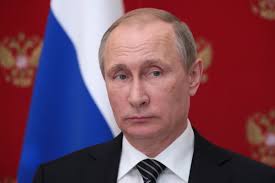Russia’s first test of its much touted new intercontinental ballistic missile will be toward the end of the year, the Ministry of Defense confirmed, after repeated delays and speculation.
“When it comes to Sarmat… we are planning the first launch exercises toward the end of 2017,” Deputy Minister of Defense Yuri Borisov told weekly magazine Military Industrial Courier.
Borisov did not give more specifics on the prospective test—but the phrase he used to describe it suggested this first test will not feature a launch of great height or distance. Although Russian state media has reported the missile’s range at 11,000 kilometers (6,835 miles) the first test is unlikely to push the missile’s limitations, focusing on a smaller take-off of a few dozen feet. Such a first stage test would only examine the missile’s ability to leave the silo.
The missile is intended to eventually replace the Soviet-made backbone of Russia’s nuclear missile forces, the R-36M Voyevoda.
The development of the Sarmat missile is a popular topic in the Russian press and the lack of official confirmation of its capabilities has invited much speculation. Citing informed sources on the condition of anonymity last week, the Kommersant newspaper reported its test was imminent before the end of the year.
“This device has not yet flown, so various leaks to the press are not about it,” Borisov said, referring to some outlets claiming that the missile was tested as part of a drill with the Russian strategic nuclear forces last week. The missile was intended to first be tested last year but has been caught in delays during its secretive development process.
The RS-28 Sarmat, nicknamed Satan 2 by NATO, received endless plaudits during its production and manufacture, albeit largely from Russian state media. It reportedly has a payload of up to a dozen warheads that are individually steerable and can strike an area the size of Texas or France. Russia’s state newswire service Itar-Tass has speculated the Sarmat can “overcome any anti-missile defense system,” while the Ministry of Defense’s TV channel Zvezda claimed the missile can “sink half of California with one strike.” The military is unlikely to officially confirm such grandiose capabilities until it tests the weapon for itself.
Development is on a tight schedule as the head of the strategic missile forces, Sergey Karakayev has said that he is expecting to begin receiving elements of the Sarmat update as soon as 2019.
According to the Kommersant report, the test will take place on the Plesetsk cosmodrome in western Russia, close to its border with Finland. As part of last week’s launch, Putin already set off a Topol ballistic missile from the range in a test that effectively tested Russia’s ability to strike targets at both its eastern and western borders.



